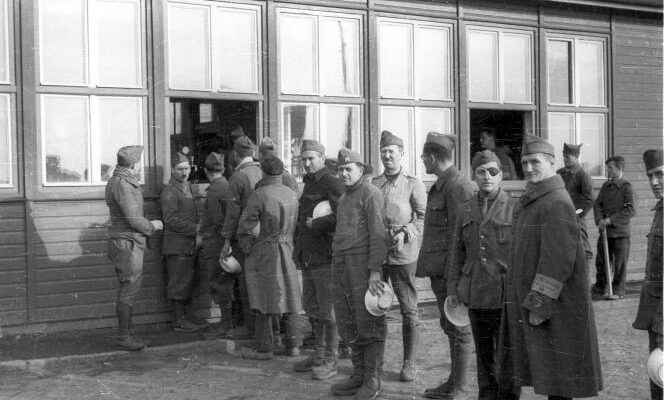LETTER FROM BERLIN
It is a wooded area of a hundred hectares, which is no longer quite the city but is not yet the countryside. A space of transition between the last buildings of Berlin and the first fields of Brandenburg. A vast expanse of greenery with somewhat anarchic vegetation, where clearings and thickets follow one another but also austere more or less dilapidated barracks: the remains of the Lichterfelde camp, where several thousand French prisoners of war were interned between 1940 and 1945 .
The existence of this camp was known. But it took three quarters of a century for us to begin to take a serious interest in its history. At the origin of this “rediscovery”: the purchase of the land, in 2012, by a large real estate group. In the neighborhood, the project, which includes the construction of 2,000 apartments, 400 individual houses, a school, three nurseries, a gymnasium and shops, is arousing strong resistance. Among the criticisms: the number deemed too low of social housing, the threat that the site would represent on biodiversity and the risk of seeing the last traces of the Lichterfelde prison camp disappear.
On this last point, years of arm wrestling between the promoter and two associations of citizens will lead to a compromise: after intervention of the heritage service of the Land of Berlin, it will be decided to keep two of the five still existing huts – there were about twenty during the war – as well as the remains of a watchtower. According to the latest plans, drawn up in 2019, one of the two huts will be devoted to the history of the place, while the second will be converted into a recreation room for young people from the neighborhood.
Sinister barracks in a row of onions
However, this is not for tomorrow. Due to the multiple appeals that have been filed, the construction site, which was initially scheduled to start in 2016, has still not started. Still, if the work has not progressed, knowledge of the Lichterfelde camp, in the meantime, has progressed considerably. Evidenced by the fascinating exhibition dedicated to him, until May 31, 2023, the Documentation Center on Forced Labor under the Third Reich.
Located 15 kilometers from Lichterfelde, this institution, which is both a museum and a place of research, gives an idea of what the former prisoner of war camp looked like. Even if it was forced laborers who were interned in this place, the sinister barracks aligned in a row of onions have the same shape as those of Lichterfelde. Except that they have been much better preserved: built in 1943 by the Nazis, they were then used as warehouses by the Soviet troops who entered Berlin in 1945, before serving as a vaccination center under the German Democratic Republic (GDR) .
You have 63.08% of this article left to read. The following is for subscribers only.
